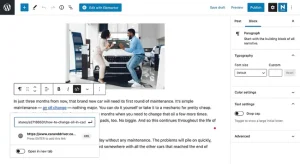scikit-learn is a powerful and versatile machine learning library in Python, widely used for building, training, and evaluating machine learning models. With its user-friendly interface and extensive collection of algorithms, scikit-learn has become a go-to tool for both beginners and experts in the field of machine learning. In this comprehensive guide, we’ll explore scikit-learn from the ground up, covering everything from installation and basic concepts to advanced techniques and practical applications. By the end of this guide, you’ll have the knowledge and skills to tackle a variety of machine learning tasks using scikit-learn.
-
Getting Started with scikit-learn:
- Installation: Step-by-step instructions for installing scikit-learn using pip or conda, on various platforms including Windows, macOS, and Linux.
- Basic Concepts: Introduction to machine learning concepts, including supervised learning, unsupervised learning, and evaluation metrics.
- Overview of scikit-learn: Introduction to the scikit-learn library, including its architecture, datasets, and common machine learning tasks it supports.
-
Data Preprocessing and Feature Engineering:
- Data Loading: Loading and inspecting datasets using scikit-learn’s built-in datasets or external data sources.
- Data Cleaning: Handling missing values, outliers, and other data anomalies using techniques such as imputation and outlier detection.
- Feature Scaling and Normalization: Standardizing or normalizing features to ensure uniformity and improve model performance.
-
Supervised Learning Algorithms:
- Classification: Introduction to classification algorithms such as logistic regression, decision trees, random forests, support vector machines (SVM), and k-nearest neighbors (KNN).
- Regression: Introduction to regression algorithms such as linear regression, ridge regression, Lasso regression, and support vector regression (SVR).
- Model Evaluation: Techniques for evaluating classification and regression models using metrics such as accuracy, precision, recall, F1-score, and mean squared error (MSE).
-
Unsupervised Learning Algorithms:
- Clustering: Introduction to clustering algorithms such as k-means clustering, hierarchical clustering, and Gaussian mixture models (GMM).
- Dimensionality Reduction: Introduction to dimensionality reduction techniques such as principal component analysis (PCA) and t-distributed stochastic neighbor embedding (t-SNE).
-
Model Selection and Tuning:
- Cross-Validation: Using cross-validation techniques such as k-fold cross-validation and stratified cross-validation to assess model performance and generalize well to unseen data.
- Hyperparameter Tuning: Techniques for optimizing model hyperparameters using methods such as grid search and randomized search.
-
Advanced Topics in scikit-learn:
- Pipeline and Feature Union: Building complex machine learning pipelines using scikit-learn’s Pipeline and FeatureUnion classes to streamline preprocessing, feature engineering, and modeling.
- Custom Estimators and Transformers: Creating custom machine learning models, transformers, and pipelines using scikit-learn’s BaseEstimator and TransformerMixin classes.
-
Practical Applications:
- Classification: Building and evaluating classification models for tasks such as sentiment analysis, spam detection, and image recognition.
- Regression: Building and evaluating regression models for tasks such as house price prediction, stock price forecasting, and demand forecasting.
- Clustering: Applying clustering algorithms for tasks such as customer segmentation, anomaly detection, and image segmentation.
Conclusion: scikit-learn offers a comprehensive suite of tools and algorithms for machine learning tasks, from data preprocessing and model training to evaluation and deployment. By mastering the concepts and techniques covered in this guide, you’ll be well-equipped to leverage scikit-learn for a wide range of machine learning projects and applications. Whether you’re a beginner exploring the basics of machine learning or an experienced practitioner seeking to enhance your skills, scikit-learn provides a powerful framework for advancing your knowledge and capabilities in the field of machine learning.













